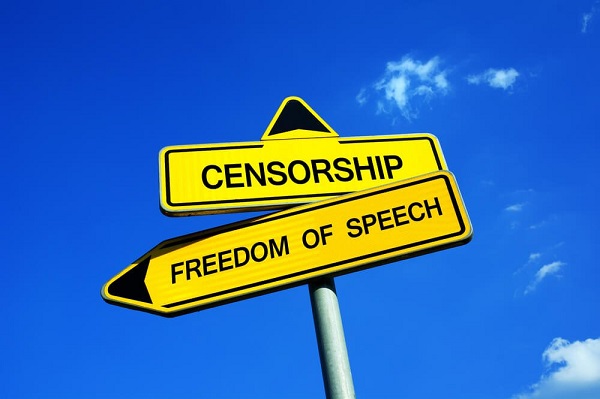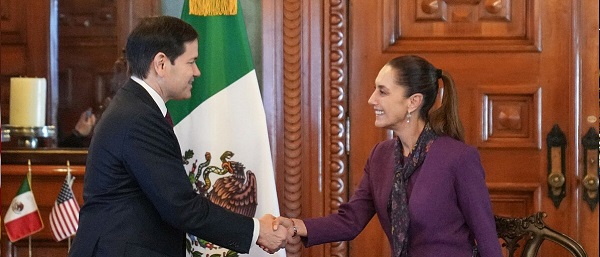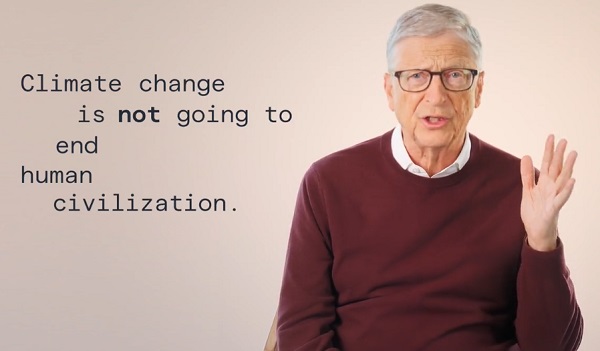Brownstone Institute
Poynter’s Creepy ‘Fact-Based Expression’

From the Brownstone Institute
BY
Fact-based expression.
That is what the once vaunted now openly vile Poynter Institute – a pivot point of the international censorship-industrial complex – wishes to “strengthen…around the globe.”
Pointedly, not “free speech,” but “fact-based expression.”
They’re not the same thing.
This absurd term, floated through the invite to read the institute’s annual and recently released “Impact Report,” may at first blush seem to be yet another silly woke wiggle, like “birthing person (mother) or “involved in the criminal justice system” (a felon) or “experiencing homelessness” (vagrant).
Like many Orwellian neologisms, it might, if you hear it only once or twice, seem to make a tiny bit of sense because “fact-based expression” implies telling the truth.
But like so many other progressive rewordings, it is purely an attempt to sound reasonable so as to mask a deeply ominous intent.
That intent? To control speech and public discourse by being the lone decider as to what is factual and what is not and those decisions are being – and will be – made based on the sociopolitical outlook of the progressive woke elite, the socialite socialist statist global drivers that fund Poynter.
But the Poynter Institute – once the premier media/journalism teaching and thinking, for lack of a better term, organizations – made a significant error in rolling out the term: it appears right after “free press,” inviting the clear comparison.
“…meaningful achievements we have made to help strengthen a free press and fact-based expression around the globe,” is how the email introduction to the report read.
So why not simply say “free speech?”
Because that’s not what they want at all (they don’t really believe in a free press either, noting the importance of the press being “responsible,” i.e..housebroken.)
To the contrary, “fact-based expression” demands both self and external censorship, a political, social, and cultural censorship that will drown out and drone on.
That is the business Poynter is in now – fact-checking. So Poynter will be telling the world what constitutes “fact-based expression” and what is not, what is verboten.
How convenient for Poynter, how wonderful for the globalists, how terrible for everyone else.
And Poynter has the connections to make it stick – take December, 2020 and Covid for example.
The American Medical Association “partnered” with Poynter to spread the gospel of vaccines, of pandemic panic, and the evils of “misinformation.”
Poynter even offered an online course that local (and national) news people from around the country could take that would leverage the trust they have built in the community to convince people to take the “vaccine:”
We know from previous vaccination efforts that local news is critically important: Audiences trust local news the most, and local journalists will be critical in guiding the public to vaccine administration sites and explaining eligibility.
The first rounds of vaccines will be based on new mRNA technology that, while being a scientific breakthrough, may raise questions in the public’s mind about safety and efficacy. We will explain the technology in ways you can pass along to the public.
The course made sure the locals reported how safe the vaccine was, how important it was, and what “misinformation” about the vaccine needed to be shot down.
Oddly enough, it also worked to help journalists “explain to audiences the importance of the second dosage of the vaccines.” On December 4, 2020 – curiously early for that specific topic – the “vaccine” had been out for only a couple of weeks.
As for all of 2020, you can see Poynter’s round-up here. Note it features the term “covidiot.”
(And you can watch a rerun of the webinar here.)
How convenient for Poynter, how wonderful for the globalists, how terrible for everyone else.
Just nine years ago, Poynter had a budget of $3.8 million and, unless you worked in the media, you had no idea it even existed. Today, thanks to massive support from the likes of Google, Meta (Facebook), and others, Poynter is a $15 million a year nexus point for those who wish to control the press and, more importantly, what everyone else says.
Poynter runs PolitiFact, a media outlet that pretends to be in the business of checking facts.
But it does no such thing. It is a global elite swamp third-party validation machine that twists and turns and backflips to put its “FACT” stamp of approval on just about anything that needs to be buttressed.
Or, more importantly, it stamps “FALSE” on a statement or story or concept that is at odds with the current popular narrative that keeps that same global elite in power (a litany of Poynter’s obfuscation and the tricks it uses can be found here).
It runs MediaWise, an outfit that claims to train (largely) younger people how to spot “misinformation,” something that does not actually exist but is a pillar of the censor’s claim to their right to exist. And through its “Teen Fact Checking Network,” Poynter is training a new generation of censors.
If Poynter were honestly trying to stop misinformation, it would not practice the art so well.
And Poynter is the home of the International Fact Checking Network, a group of global media and other fact-checking organizations that is dedicated to “fighting repression and misinformation.”
To quote the IFCN chief: “Misinformation is on the march. The politically powerful are using disinformation to confuse the public and control the agenda. And fact-checkers and other journalists face attack and harassment simply for doing their jobs,” said Angie Drobnic Holan, IFCN director. “Yet our work continues. We are on the side of truth. We are on the side of information integrity.”
And the IFCN determines what is the truth, what information has the requisite “integrity” to pass muster?
In other words, doing to the world what it has done to the United States: work with social media and government agencies to stamp out dissent.
April 2 was “International Fact Checking Day.” To honor the occasion, Drobnic Holan took to her blog to claim that fact-checkers are not censors and, it appears, that the Murthy v. Missouri case currently in front of the United States Supreme Court is not really about the basic and immutable American tenet of freedom of speech but about letting misinformers keep muddying the waters of official truth:
The Supreme Court case is primarily about the government’s actions in dealing with tech platforms: Did the Biden administration go too far in asking for takedowns of vaccine-related misinformation? For years, similar attacks have been aimed at fact-checkers. As director of the International Fact-Checking Network, I’ve watched this movement label fact-checkers as part of a “censorship industrial complex,” claiming that fact-checkers are trying to suppress debatable information.
Ironically, this deeply misleading argument itself is aimed at suppressing critique and debate.
Google and Meta (Facebook) and TikTok are, as noted, Poynter funders and use its products to help decide what is or is not allowed on their platforms. That actual fact does not bode well for the neutrality of Poynter’s fact-checking efforts.
Specifically as to TikTok, Poynter proudly claims that “(T)hrough innovative fact-checking partnerships with Meta and TikTok, PolitiFact is slowing the spread of thousands of pieces of false or harmful online content each month — reducing future views of false information by 80% on average.”
And Poynter decides what is “harmful” and “false.”
And just a few days ago, clearly in response to the bill to force the sale of TikTok going through Congress, Poynter decided to “fact check” who really owns TikTok. Poynter decided that the statement that the “Chinese government owns TikTok” is – surprise surprise – false.
Because of its vaunted past, Poynter is the respectable (actually becoming less respectable with each passing million) face of the international movement to determine what the public can talk about.
And it seems being in the “fact” industry is good for business – budget tripled, staff doubled, got far more notoriety, and getting a bit of actual global power, all in the past decade.
Google, Meta, the Omidyar network (lefty media funders), The Just Trust (a spinoff of the Chan-Zuckerberg Initiative that focuses on “criminal justice), TikTok, the MacArthur Foundation, and the Stanford Impact Labs, which “invests in teams of researchers working with leaders in government, business, and communities to design, test, and scale interventions that can help us make progress on some of the world’s most pressing and persistent social challenges” are some of the major funders of Poynter.
All of the above are powerful progressive/woke companies and foundations and are intertwined with the global movement to muzzle the freedom of the average person, to create a rental world in which people will simply be interchangeable cogs to be watched, fed, and placated.
Another funder of Poynter is the National Endowment for Democracy (NED), one of the most caustic – and powerful – members of the international “civil society” behemoth that lay somewhere between government and private industry and is now more powerful than either.
Note: NED was specifically founded in the 1980s to do in public what the CIA could no longer do in secret: play international politics, foment revolutions, buy supporters, and influence foreign media.
Another Poynter partner is the Alliance for Securing Democracy (ASD), a stepchild of the still-extant German Marshall Fund.
Reminder – the Marshall Plan was set up after World War II to help rebuild Germany and Europe; the Fund was created by the West German government and is now one of most slithery internationalist think tanks on the planet.
Last November, Poynter hosted a very very poorly attended “United Facts of America” online symposium, which included the participation of the Fund and the ASD. The ASD was the group behind the “Hamilton 68” Russian disinformation dashboard, a tool used countless times by the mainstream media to show how much Russia had warped the American electoral process.
The world can expect to see “fact-based expression” more often in the very near future, can expect to hear “Are you in favor of lying?” arguments if you say you are worried about the new rubric, and can expect to see ‘fact-based expression” in law books soon as an appropriate mitigation of free and unfettered speech.
The concept is already making headway – see the Online Harms Bill proposed in Canada, which “authorizes house arrest and electronic tagging for a person considered likely to commit a future (hate) crime.”
Poynter is a far far distance away from its original mission, but in theory still understands the actual news business. We asked them what exactly is “fact-based expression:”
“What is ‘fact-based expression’ exactly? What does that term mean? It has to be different from ‘free speech’ because (the report intro) would have read ‘free speech’ just as it did ‘free press.’”
The response from the transparent media training foundation?
“We have seen your message and I have shared it with the team. We did see your deadline note in the subject line and in the body text. We’ll try to respond as soon as we can, keeping your deadline in mind.”
No further response – I guess “the team” didn’t want to answer the question or they didn’t have a “fact-based expression” to reply with.
Brownstone Institute
Bizarre Decisions about Nicotine Pouches Lead to the Wrong Products on Shelves

From the Brownstone Institute
A walk through a dozen convenience stores in Montgomery County, Pennsylvania, says a lot about how US nicotine policy actually works. Only about one in eight nicotine-pouch products for sale is legal. The rest are unauthorized—but they’re not all the same. Some are brightly branded, with uncertain ingredients, not approved by any Western regulator, and clearly aimed at impulse buyers. Others—like Sweden’s NOAT—are the opposite: muted, well-made, adult-oriented, and already approved for sale in Europe.
Yet in the United States, NOAT has been told to stop selling. In September 2025, the Food and Drug Administration (FDA) issued the company a warning letter for offering nicotine pouches without marketing authorization. That might make sense if the products were dangerous, but they appear to be among the safest on the market: mild flavors, low nicotine levels, and recyclable paper packaging. In Europe, regulators consider them acceptable. In America, they’re banned. The decision looks, at best, strange—and possibly arbitrary.
What the Market Shows
My October 2025 audit was straightforward. I visited twelve stores and recorded every distinct pouch product visible for sale at the counter. If the item matched one of the twenty ZYN products that the FDA authorized in January, it was counted as legal. Everything else was counted as illegal.
Two of the stores told me they had recently received FDA letters and had already removed most illegal stock. The other ten stores were still dominated by unauthorized products—more than 93 percent of what was on display. Across all twelve locations, about 12 percent of products were legal ZYN, and about 88 percent were not.
The illegal share wasn’t uniform. Many of the unauthorized products were clearly high-nicotine imports with flashy names like Loop, Velo, and Zimo. These products may be fine, but some are probably high in contaminants, and a few often with very high nicotine levels. Others were subdued, plainly meant for adult users. NOAT was a good example of that second group: simple packaging, oat-based filler, restrained flavoring, and branding that makes no effort to look “cool.” It’s the kind of product any regulator serious about harm reduction would welcome.
Enforcement Works
To the FDA’s credit, enforcement does make a difference. The two stores that received official letters quickly pulled their illegal stock. That mirrors the agency’s broader efforts this year: new import alerts to detain unauthorized tobacco products at the border (see also Import Alert 98-06), and hundreds of warning letters to retailers, importers, and distributors.
But effective enforcement can’t solve a supply problem. The list of legal nicotine-pouch products is still extremely short—only a narrow range of ZYN items. Adults who want more variety, or stores that want to meet that demand, inevitably turn to gray-market suppliers. The more limited the legal catalog, the more the illegal market thrives.
Why the NOAT Decision Appears Bizarre
The FDA’s own actions make the situation hard to explain. In January 2025, it authorized twenty ZYN products after finding that they contained far fewer harmful chemicals than cigarettes and could help adult smokers switch. That was progress. But nine months later, the FDA has approved nothing else—while sending a warning letter to NOAT, arguably the least youth-oriented pouch line in the world.
The outcome is bad for legal sellers and public health. ZYN is legal; a handful of clearly risky, high-nicotine imports continue to circulate; and a mild, adult-market brand that meets European safety and labeling rules is banned. Officially, NOAT’s problem is procedural—it lacks a marketing order. But in practical terms, the FDA is punishing the very design choices it claims to value: simplicity, low appeal to minors, and clean ingredients.
This approach also ignores the differences in actual risk. Studies consistently show that nicotine pouches have far fewer toxins than cigarettes and far less variability than many vapes. The biggest pouch concerns are uneven nicotine levels and occasional traces of tobacco-specific nitrosamines, depending on manufacturing quality. The serious contamination issues—heavy metals and inconsistent dosage—belong mostly to disposable vapes, particularly the flood of unregulated imports from China. Treating all “unauthorized” products as equally bad blurs those distinctions and undermines proportional enforcement.
A Better Balance: Enforce Upstream, Widen the Legal Path
My small Montgomery County survey suggests a simple formula for improvement.
First, keep enforcement targeted and focused on suppliers, not just clerks. Warning letters clearly change behavior at the store level, but the biggest impact will come from auditing distributors and importers, and stopping bad shipments before they reach retail shelves.
Second, make compliance easy. A single-page list of authorized nicotine-pouch products—currently the twenty approved ZYN items—should be posted in every store and attached to distributor invoices. Point-of-sale systems can block barcodes for anything not on the list, and retailers could affirm, once a year, that they stock only approved items.
Third, widen the legal lane. The FDA launched a pilot program in September 2025 to speed review of new pouch applications. That program should spell out exactly what evidence is needed—chemical data, toxicology, nicotine release rates, and behavioral studies—and make timely decisions. If products like NOAT meet those standards, they should be authorized quickly. Legal competition among adult-oriented brands will crowd out the sketchy imports far faster than enforcement alone.
The Bottom Line
Enforcement matters, and the data show it works—where it happens. But the legal market is too narrow to protect consumers or encourage innovation. The current regime leaves a few ZYN products as lonely legal islands in a sea of gray-market pouches that range from sensible to reckless.
The FDA’s treatment of NOAT stands out as a case study in inconsistency: a quiet, adult-focused brand approved in Europe yet effectively banned in the US, while flashier and riskier options continue to slip through. That’s not a public-health victory; it’s a missed opportunity.
If the goal is to help adult smokers move to lower-risk products while keeping youth use low, the path forward is clear: enforce smartly, make compliance easy, and give good products a fair shot. Right now, we’re doing the first part well—but failing at the second and third. It’s time to fix that.
Addictions
The War on Commonsense Nicotine Regulation

From the Brownstone Institute
Cigarettes kill nearly half a million Americans each year. Everyone knows it, including the Food and Drug Administration. Yet while the most lethal nicotine product remains on sale in every gas station, the FDA continues to block or delay far safer alternatives.
Nicotine pouches—small, smokeless packets tucked under the lip—deliver nicotine without burning tobacco. They eliminate the tar, carbon monoxide, and carcinogens that make cigarettes so deadly. The logic of harm reduction couldn’t be clearer: if smokers can get nicotine without smoke, millions of lives could be saved.
Sweden has already proven the point. Through widespread use of snus and nicotine pouches, the country has cut daily smoking to about 5 percent, the lowest rate in Europe. Lung-cancer deaths are less than half the continental average. This “Swedish Experience” shows that when adults are given safer options, they switch voluntarily—no prohibition required.
In the United States, however, the FDA’s tobacco division has turned this logic on its head. Since Congress gave it sweeping authority in 2009, the agency has demanded that every new product undergo a Premarket Tobacco Product Application, or PMTA, proving it is “appropriate for the protection of public health.” That sounds reasonable until you see how the process works.
Manufacturers must spend millions on speculative modeling about how their products might affect every segment of society—smokers, nonsmokers, youth, and future generations—before they can even reach the market. Unsurprisingly, almost all PMTAs have been denied or shelved. Reduced-risk products sit in limbo while Marlboros and Newports remain untouched.
Only this January did the agency relent slightly, authorizing 20 ZYN nicotine-pouch products made by Swedish Match, now owned by Philip Morris. The FDA admitted the obvious: “The data show that these specific products are appropriate for the protection of public health.” The toxic-chemical levels were far lower than in cigarettes, and adult smokers were more likely to switch than teens were to start.
The decision should have been a turning point. Instead, it exposed the double standard. Other pouch makers—especially smaller firms from Sweden and the US, such as NOAT—remain locked out of the legal market even when their products meet the same technical standards.
The FDA’s inaction has created a black market dominated by unregulated imports, many from China. According to my own research, roughly 85 percent of pouches now sold in convenience stores are technically illegal.
The agency claims that this heavy-handed approach protects kids. But youth pouch use in the US remains very low—about 1.5 percent of high-school students according to the latest National Youth Tobacco Survey—while nearly 30 million American adults still smoke. Denying safer products to millions of addicted adults because a tiny fraction of teens might experiment is the opposite of public-health logic.
There’s a better path. The FDA should base its decisions on science, not fear. If a product dramatically reduces exposure to harmful chemicals, meets strict packaging and marketing standards, and enforces Tobacco 21 age verification, it should be allowed on the market. Population-level effects can be monitored afterward through real-world data on switching and youth use. That’s how drug and vaccine regulation already works.
Sweden’s evidence shows the results of a pragmatic approach: a near-smoke-free society achieved through consumer choice, not coercion. The FDA’s own approval of ZYN proves that such products can meet its legal standard for protecting public health. The next step is consistency—apply the same rules to everyone.
Combustion, not nicotine, is the killer. Until the FDA acts on that simple truth, it will keep protecting the cigarette industry it was supposed to regulate.
-

 Aristotle Foundation2 days ago
Aristotle Foundation2 days agoB.C. government laid groundwork for turning private property into Aboriginal land
-

 Bruce Dowbiggin1 day ago
Bruce Dowbiggin1 day agoA Story So Good Not Even The Elbows Up Crew Could Ruin It
-

 Agriculture8 hours ago
Agriculture8 hours agoDanish Cows Collapsing Under Mandatory Methane-Reducing Additive
-

 Alberta1 day ago
Alberta1 day agoCanada’s heavy oil finds new fans as global demand rises
-

 Daily Caller21 hours ago
Daily Caller21 hours agoTrump Reportedly Planning Ground Troops, Drone Strikes On Cartels In Mexico
-

 Health1 day ago
Health1 day agoRFK Jr’s argument for studying efficacy of various vaccines
-

 Addictions1 day ago
Addictions1 day agoThe War on Commonsense Nicotine Regulation
-

 Business21 hours ago
Business21 hours agoTrump’s Tariffs Have Not Caused Economy To Collapse








